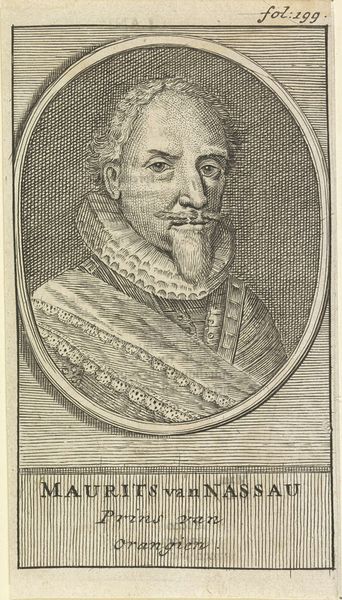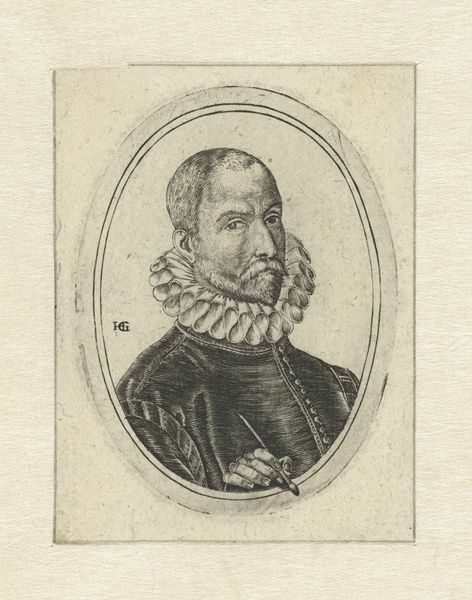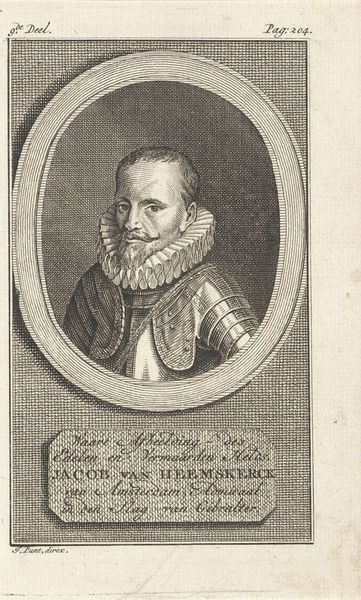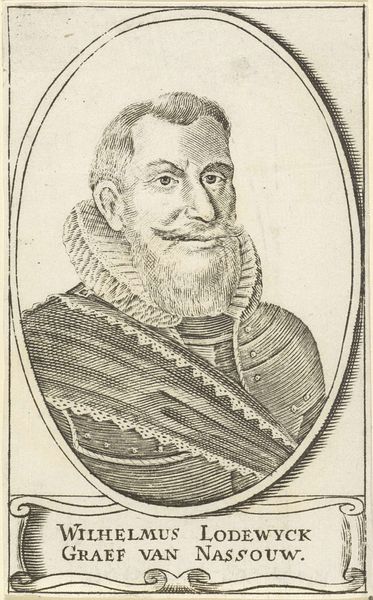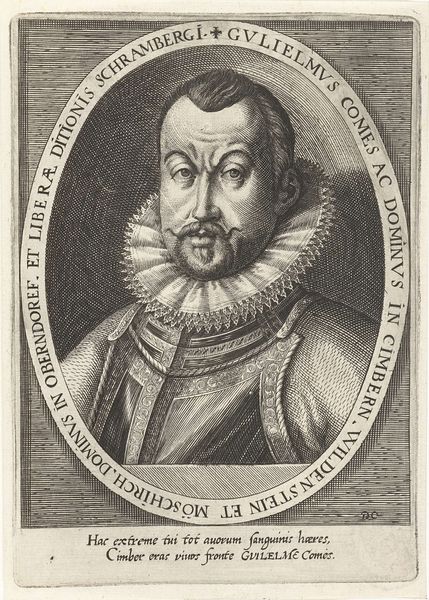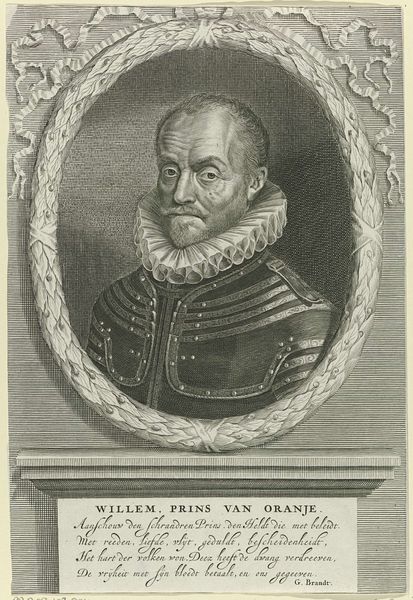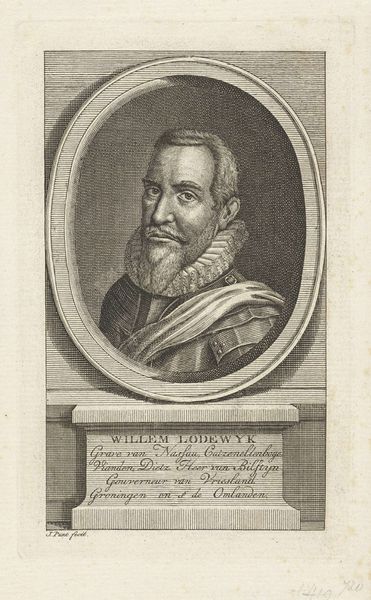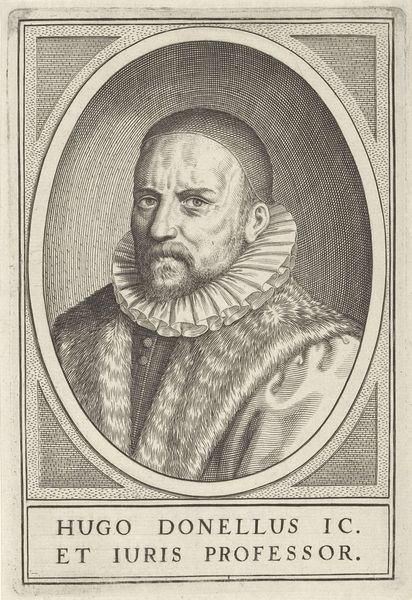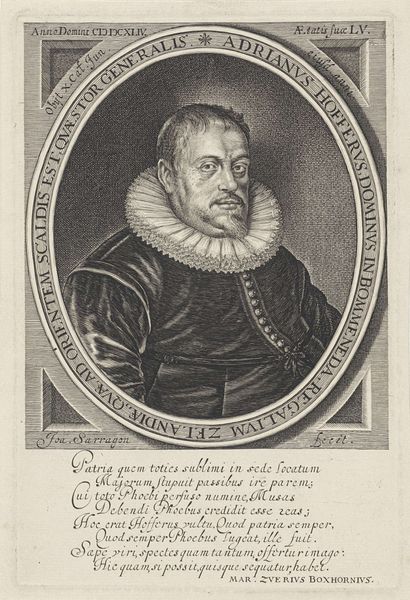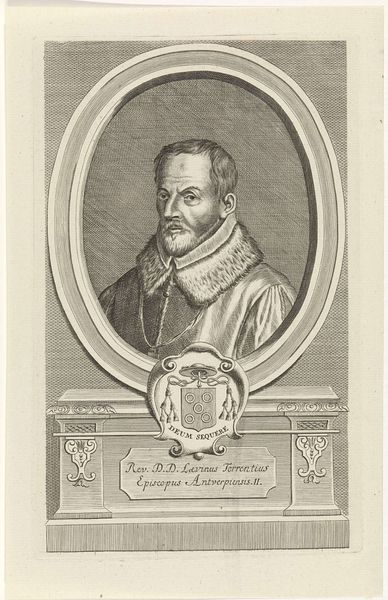
print, engraving
#
portrait
#
baroque
#
dutch-golden-age
# print
#
old engraving style
#
caricature
#
history-painting
#
engraving
Dimensions: height 159 mm, width 112 mm
Copyright: Rijks Museum: Open Domain
Curator: Before us hangs a 17th-century print from an anonymous artist, residing here at the Rijksmuseum. It’s entitled, "Portret van Willem Lodewijk, graaf van Nassau-Dillenburg," depicting Willem Lodewijk, Count of Nassau-Dillenburg. Editor: It feels stark, doesn't it? All those rigid lines give the portrait a sense of unyielding authority. I am immediately drawn to the textures created solely by line density, making it quite visually compelling. Curator: Indeed. What we’re observing here is a rather traditional example of Baroque portraiture within the Dutch Golden Age context, executed using engraving techniques. Note the detail in his ruff and armor, characteristic of the period’s desire to represent social status. This would likely have served as a form of political imagery, reminding viewers of Nassau's power as governor. Editor: Absolutely. The way light and shadow are rendered solely through cross-hatching creates a strong sense of depth, considering it is merely an image comprised of simple lines. Curator: And observe how the oval frame further emphasizes the formality and decorum befitting a noble. This visual enclosure almost separates him from our space and time, encapsulating a moment of power. It presents an interesting intersection of social stature and graphic conventions of that era. This image's distribution through printed media had direct political impact at a key period of early modern European state building. Editor: From a purely visual standpoint, there's a precision in the line work that speaks to meticulous planning and the artist's impressive command of the medium. I'm captivated by the reduction of three-dimensional forms into something graphic yet retaining a level of nuanced character detail, like the slight furrow of his brow or the shape of his beard. Curator: It reminds us of how even the most seemingly straightforward image, when unpacked, can give way to dialogues regarding class, statecraft, and identity, not just aesthetic pleasure. Editor: It has offered me an invitation to appreciate its aesthetic strengths even within its historical context, demonstrating a keen command of rendering form.
Comments
No comments
Be the first to comment and join the conversation on the ultimate creative platform.



